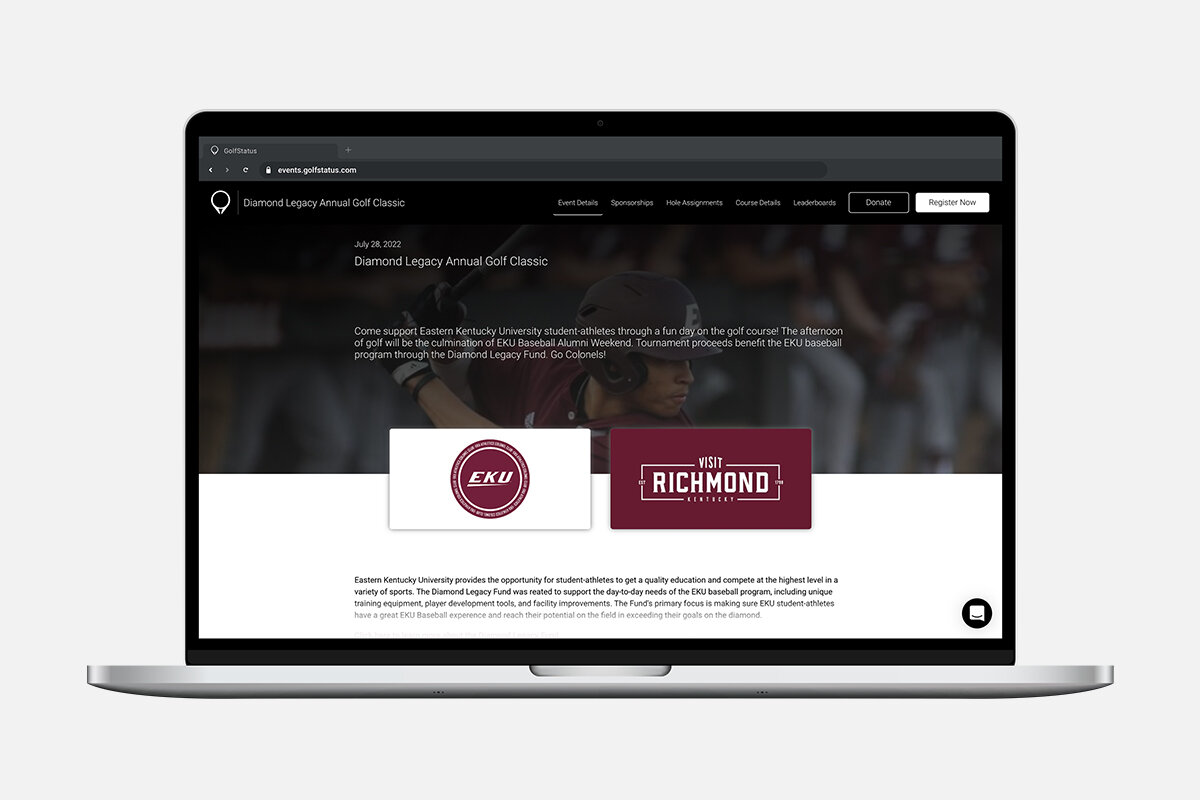As nonprofits shift focus to year-end giving campaigns and 2023 planning, there are a few simple—but impactful—steps to take right now to get ahead of the game for your 2023 golf event. If you’re thinking about a golf fundraiser in 2023, whether it’s a brand new event or an established tournament, you can set your golf outing up for success by checking these five to-dos off your list before the end of the year.
1. Get Your Tech In Place
The right technology is key to easy planning and successful execution of a golf fundraiser. Because golf events have distinctive components—like handicaps, flighting, hole assignments, scoring—having a platform that’s specifically designed for golf is crucial. While ticketing software, generic event management platforms, or even your CRM might seem like natural solutions, they simply can’t efficiently handle the unique nuances of a golf tournament, and may very well end up costing organizers valuable time trying to force a square peg into a round hole. Look for a provider with online registration that populates an intuitive backend to manage player and sponsor information in real-time and in one accessible place. Get your tech in place early so you can start promoting the tournament and collecting registrations as soon as possible.
2. Launch an Event Website
The earlier the better! An event website gives supporters a centralized place to find more information about the organization and event, purchase teams and sponsorships, and even make a donation. Direct all your promotion to the website so folks can take action to support your cause and event as soon as they hear about it (when they’re significantly more likely to do so!). You don’t have to have all the details in place to launch an event site—a date and location is enough to start—and simply make updates and add information as those details are firmed up.
Launch an event website as soon as you set a date and location, and simply make information as additional details are determined.
3. Send Save-the-Dates
Get your event on donors’ minds early and in front of sponsors amid annual budget planning. As soon as you have a date set with the golf facility (and your event website launched), send a quick email to your contact database as well as individual emails to major donors and supporters to get it on their calendars and into their budgets. If you send postcards or any printed materials, include a QR code that links directly to your event website. Include information about the golf event in any year-end appeals to get more mileage out of those communications.
4. Plan on Live-Scoring
Live-scoring adds a high-end element to your golf tournament. What’s more, live-scoring has a ton of advantages—you can sell a lucrative leaderboard sponsorship and individual digital hole sponsorships, share leaderboards online to connect with more supporters and collect donations, keep golfers engaged throughout the round, and even finalize results quickly so you can keep the day moving forward. Make sure your live-scoring platform is reliable and simple to use.
Your live-scoring platform should be reliable and simple to use, keeping golfers and sponsors engaged.
5. Look for New Sponsorship Opportunities
Sponsorships are the bread and butter of a golf tournament’s fundraising. Organizers should think outside the box when it comes to sponsor exposure and even types of sponsorships to offer. Digital exposure provides a ton of ROI for sponsors wanting to get their business and brands in front of an audience of affluent members of the community, so look for an event management option that has robust sponsor exposure across multiple touchpoints. Elements that add fun and excitement to your event, like hole-in-one contests, custom swag, or on-course entertainment/fundraising, are also prime sponsorship opportunities (and cover the contest’s fixed costs). Consider selling other high-end sponsorships, like pin flags, technology, or leaderboard sponsorships.
Look for an event management option that offers digital exposure across multiple touchpoints.
Ready to Start Planning?
GolfStatus’s golf event management and fundraising platform streamlines and simplifies golf fundraisers, offering solutions that save time and raise more money. Nonprofits and those holding events that benefit them can qualify for no-cost access to GolfStatus’s technology—including an event website, online registration, live-scoring, and much more—through the Golf for Good program. Plus, GolfStatus’s in-house customer success team is there to answer questions and help you have your most successful event yet. Ready to get started? Click the button below or email [email protected].

































